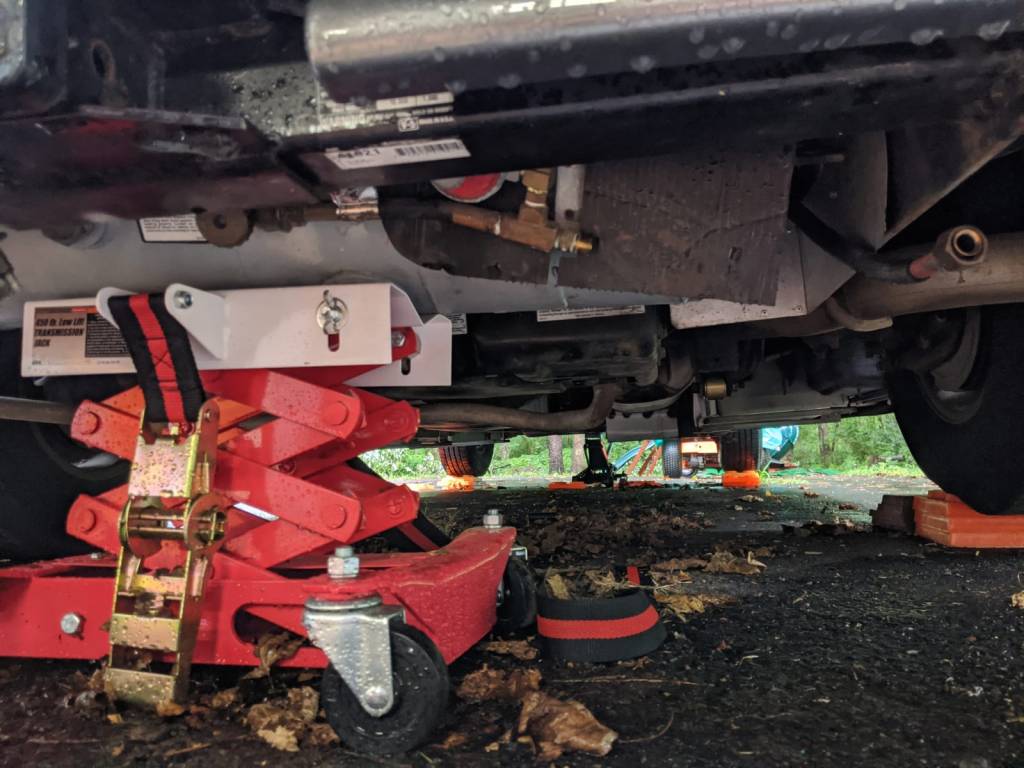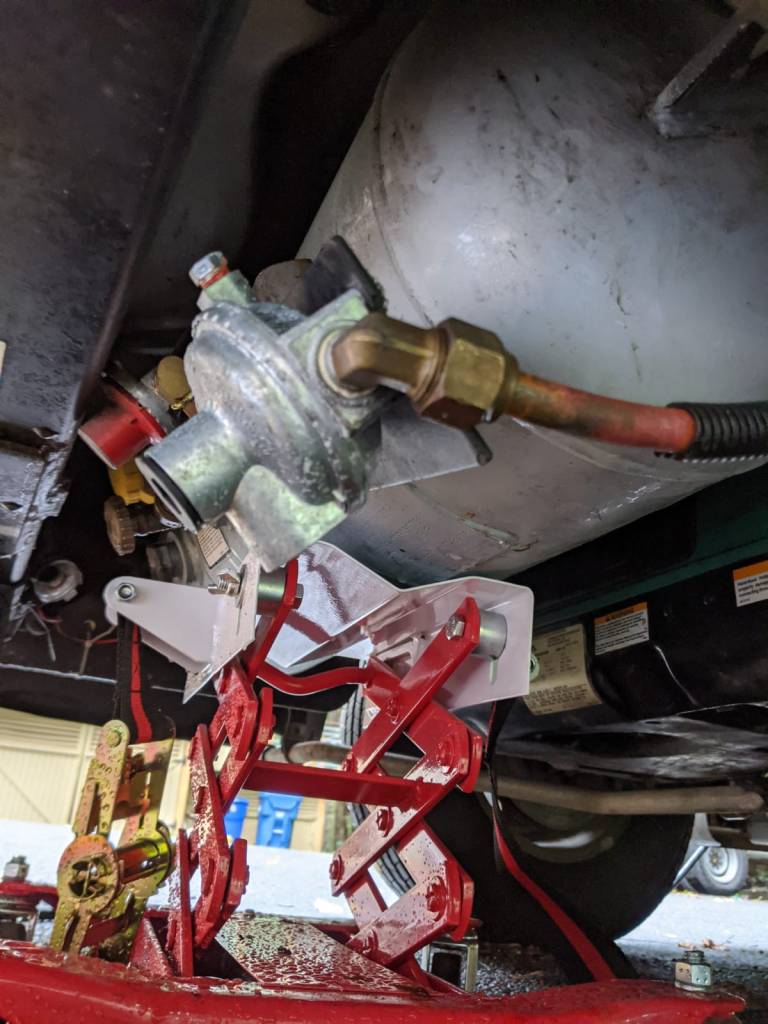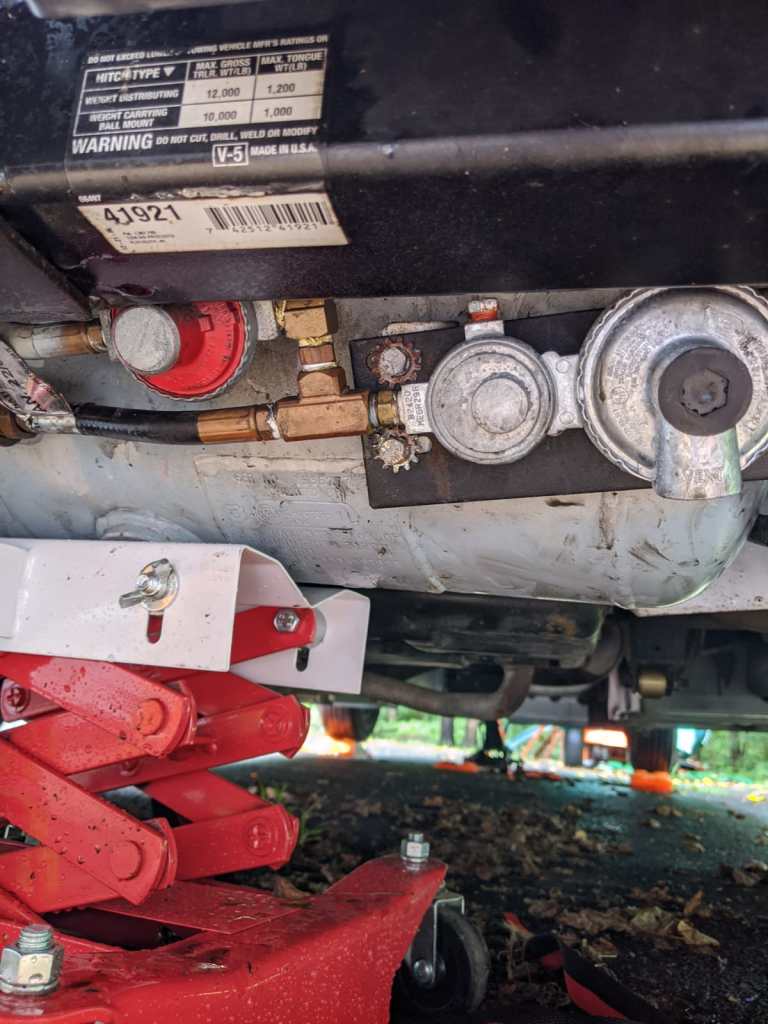We’ve been fighting the fridge for a while. On our last trip, the fridge temp sensor was at 50 *F and climbing and for once, it wasn’t because we left it open… ZTL found a fried fuse in the DC heater circuit. We put the important stuff in a cooler for the 8 hour trip home. The Turdwreck comes with a Dometic three-way fridge. Propane-DC-AC. We started researching new fridges. Before dropping big bills on a new fridge, ZTL thought we should first make sure the propane was also working correctly. He created a manometer (!!) and concluded that the pressure is not quite right so now we’ve got a new pressure regulator, a new fuse holder and a fridge that keeps things COLD!!.
We started noticing that the propane wouldn’t keep our food cold while driving down the road. I looked at baffles for the fridge cover, figuring the class B had a different aero profile and was blowing the flame around. Then we started using the DC option while driving, the temperatures came back down to food safe (40 deg F or less). So we were doing the DC whilst driving and propane or AC whilst parked. This worked for 2 or 3 weekend trips, but then the fridge started getting warmer and warmer. Opened the vent cover and inspected the back of the fridge. WoW! The entire fuse holder had burnt through and one leg of the fuse was melted into oblivion. I think we were lucky the TURD didn’t burn down.
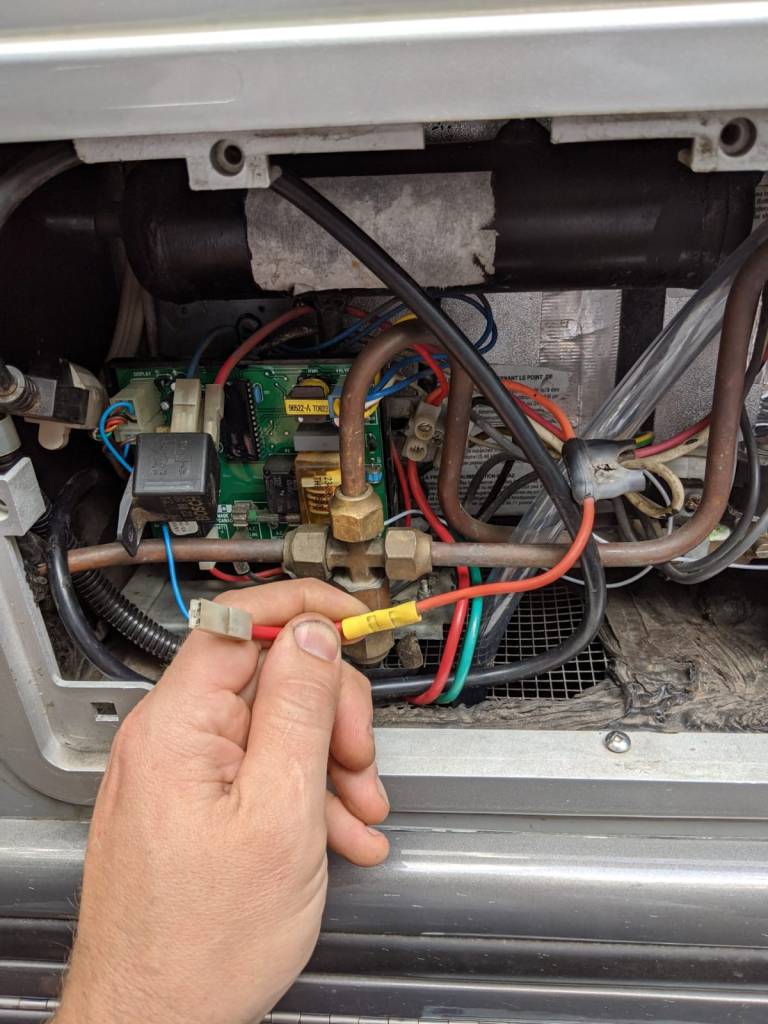
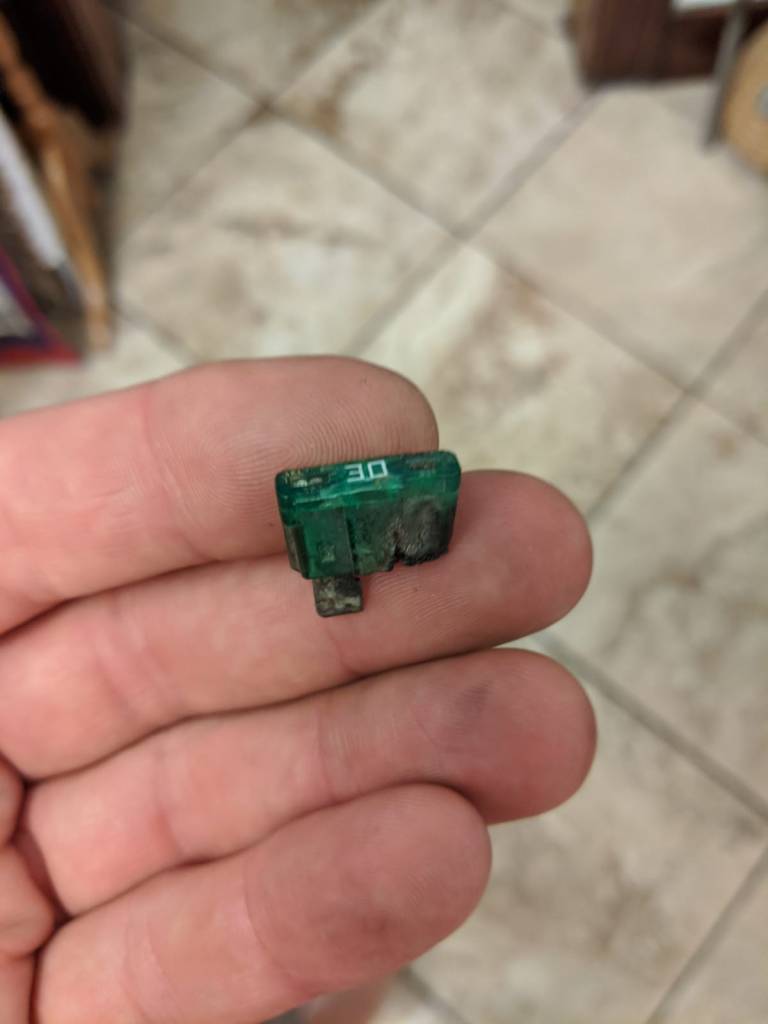
crispy critter 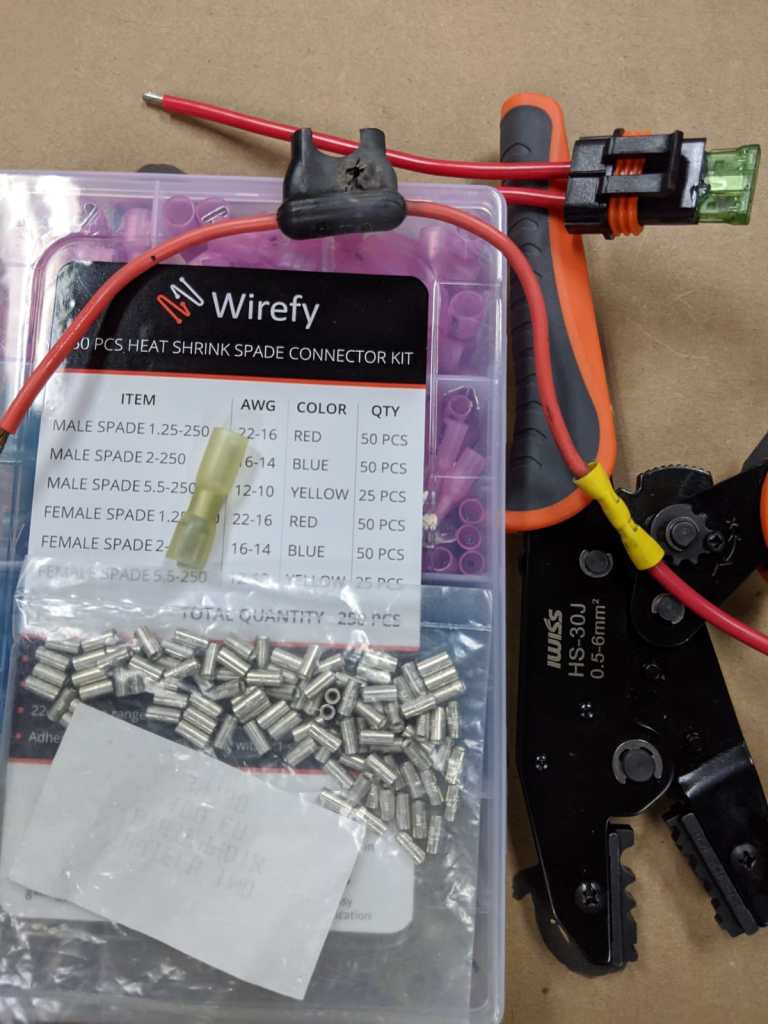
We limped along, using propane or AC for the rest of the trip, but the fridge was now warm so we used a cooler for the items that really needed to be cold (COORS LIGHT!). After we got home and left the fridge on propane, it was also getting warm. We started shopping for a new 3 way fridge and were not pleased with the price-tag… $1200 clams! We already have a portable compressor fridge, which works fine when you have sun/solar/AC. We can’t count on a full day of sun on the east coast (so many trees/forests/clouds/storms) like we could on the west coast for the solarz, nor can we always count on having AC at the places we will be camping.
There are all sorts of troubleshooting guides for the different RV absorption refrigerators. Dometic or Norcold, doesn’t matter they’re all just about the same, all of ours have been Dometic. We had one with an ammonia leak and both of our RVs have had a bad LP regulator. I read that the regulators go bad after about 10 years or so. The regulator on a Class C or A is generally easy to replace, on a Class B however, might be a real pain in the butt to switcharoo.
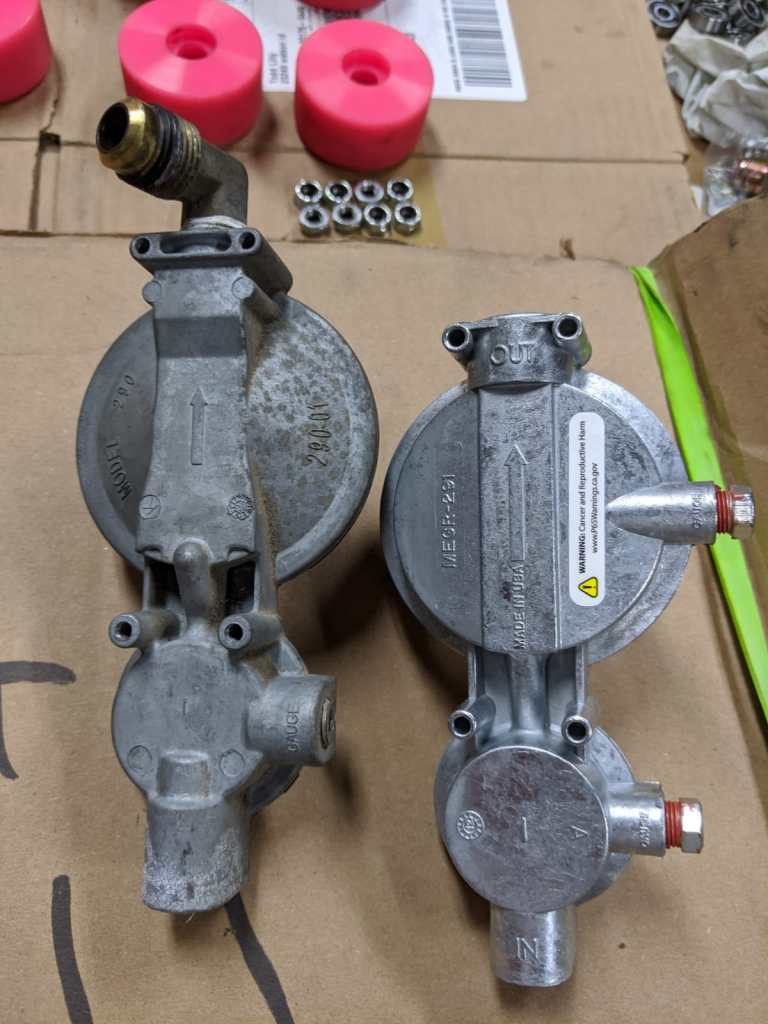
The three way refrigerator has three options for (hopefully) keeping your food cold: AC or DC electricity and propane. The AC and DC options supply current to two different heaters or propane (flame) heats the fridge chimney. AC can be sourced from shore power, generator, or an inverter. DC (battery) power will come from your vehicle’s alternator or solar. If you use the batteries alone for DC, plan on dead batteries in a couple of hours. Propane comes from the propane tank whose high pressure is reduced and regulated via the pressure regulator.
So then back to checking the propane pressure. Everybody says to check the propane pressure, but nobody tells you what kind of fitting is on the pressure port. On the Dometic, it’s a 1/8 NPT Allen head plug just behind the propane nozzle on the fridge; don’t burn yourself or blow up the ‘camper!! The digital pressure meters on Amazon are $80 and are calibrated by…. none other than a water manometer!! The 1/8 NPT and some hose will cost about FREE if you have a garage full of junk, and maybe $5 if you have to go buy it at the hardware store. I used the nozzle out of an airgun and some clear hose we had laying around for Burning Man. It worked!!!!
You can easily make one with some clear hose and a 1/8 NPT nipple, any size nipple that fits your hose. The hose will need to be long enough to reach the pressure port and have a U-shaped loop of about ~25″; I used about 4 feet of hose. When measuring pressure, remember it’s how far a COLUMN of water is moved. so measure the downward and upward movement (or the upward movement divided by 2).
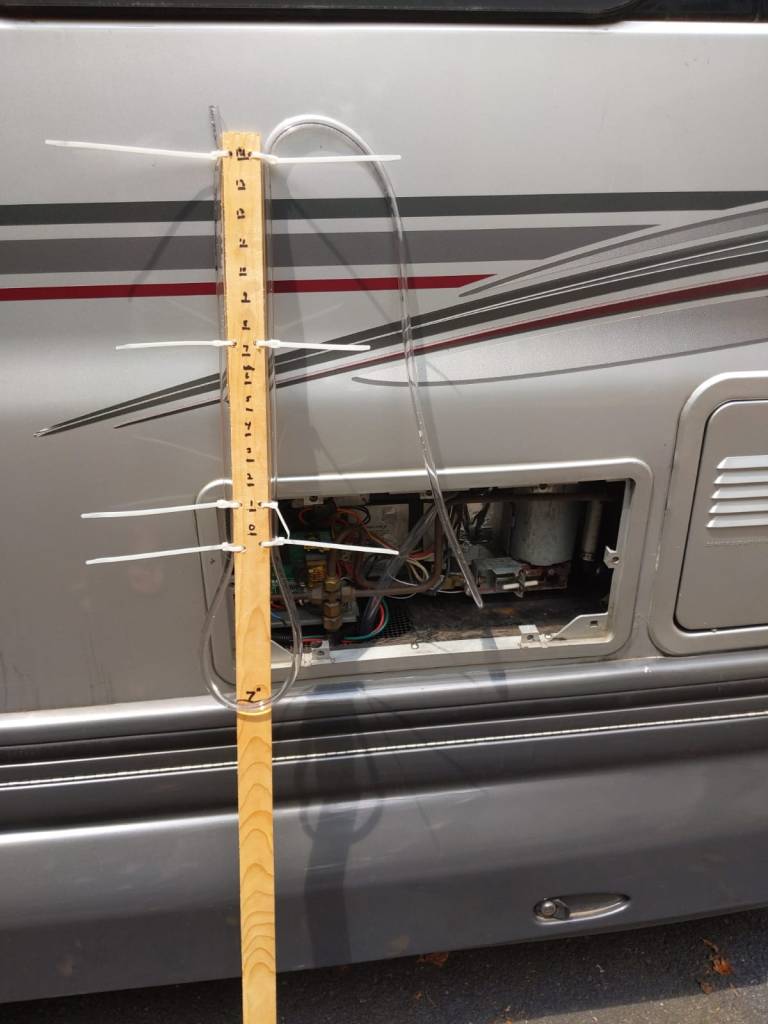
Most propane pressure regulators are designed to provide 11″ of pressure at a certain BTU. So, if you have the gas water heater, gas stove, gas oven and the gas fridge going all at once the regulator will provide 11″ of pressure. This also means that when you are using just the propane refrigerator your propane pressure will be higher than 11″. The WHOLE INTERNET keeps reiterating that you need 11″, but they don’t mention that a functioning regulator will have WAY MORE pressure than 11″ with just one appliance running. Therefore, expect ~14″ or more pressure with one appliance running. If you have close to 11 (in our case it was 10.25″), that’s not enough for just one appliance and your regulator is probably shot. Note the “bad flame” on the left is redder (not as hot), whereas the “good flame” is brighter/whiter indicating proper flame-age.
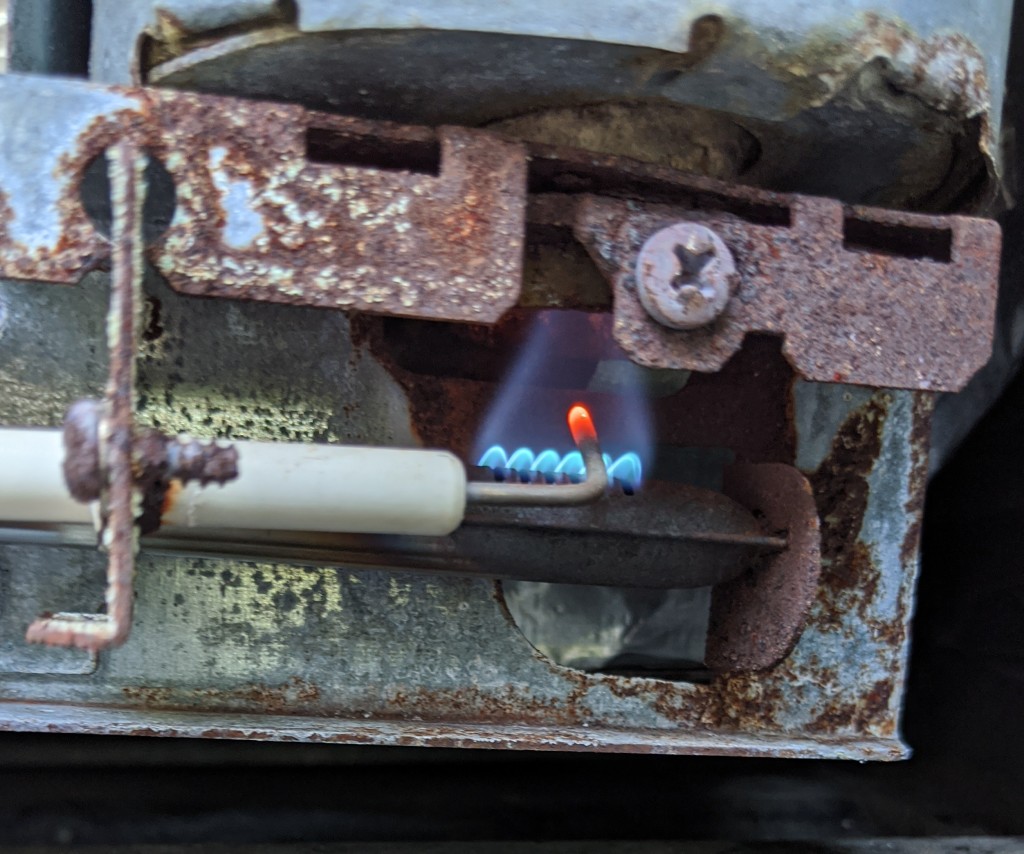
bad flame 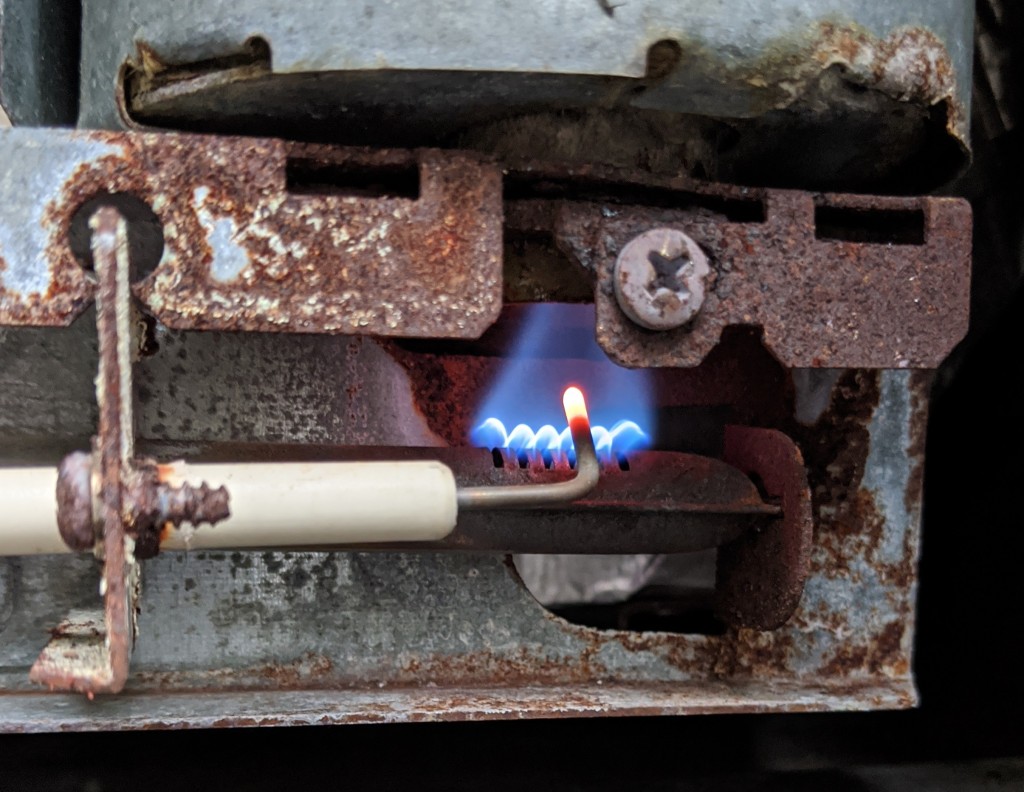
good flame
The first measurement was ~5″ which was confusing. Then realized that I need to double the measurement if only measuring one side of the loop. Then I measured again, more precisely and came up with 10.25″. what??? these fridges are THAT sensitive that 0.75″ of pressure will matter? Came to realize that the minimum pressure is 11″ with all appliances running. It should be well over 11″ with just the fridge on. Time to replace the pressure regulator.
The pressure regulator on a 2007 Roadtrek Popular 190 is physically located between the propane tank and the bumper and trailer hitch. Figured I’d have to lower the hitch and maybe the bumper to get at the regulator. A quick search showed me that I could lower the propane tank quickly as it’s only held on with four bolts.
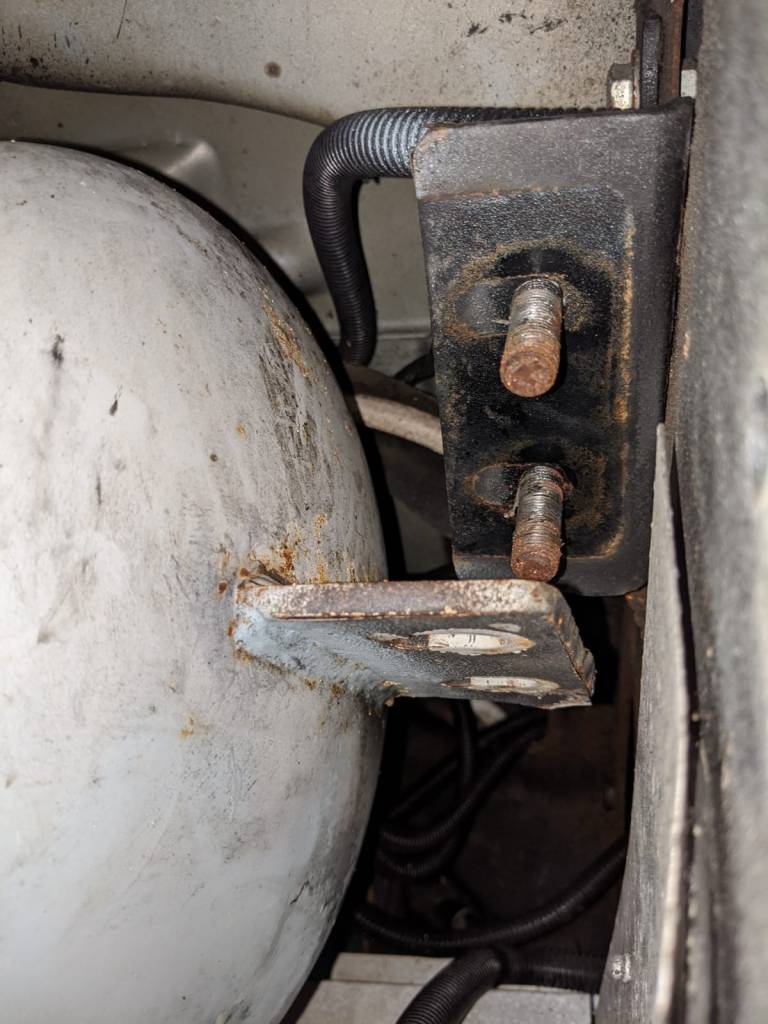
I SHUTOFF THE MAIN VALVE, then let the pressure out of the lines by letting the fridge run until it wouldn’t re-light. Then I turned on one of the stove burners for a few seconds to see if I smelled propane. I used a HFT trans jack to support the newly filled propane tank while I loosened the 4 nuts.
Then I disconnected the main propane line from the tank, wiggled and scooched the tank on the jack until it was clear to lower. I lowered a little bit and unplugged the snap-on tank fuel gauge, breaking a tab in the process. A quick look says $50 for a replacement, I eventually just taped it back on the tank, you’ll be more careful…
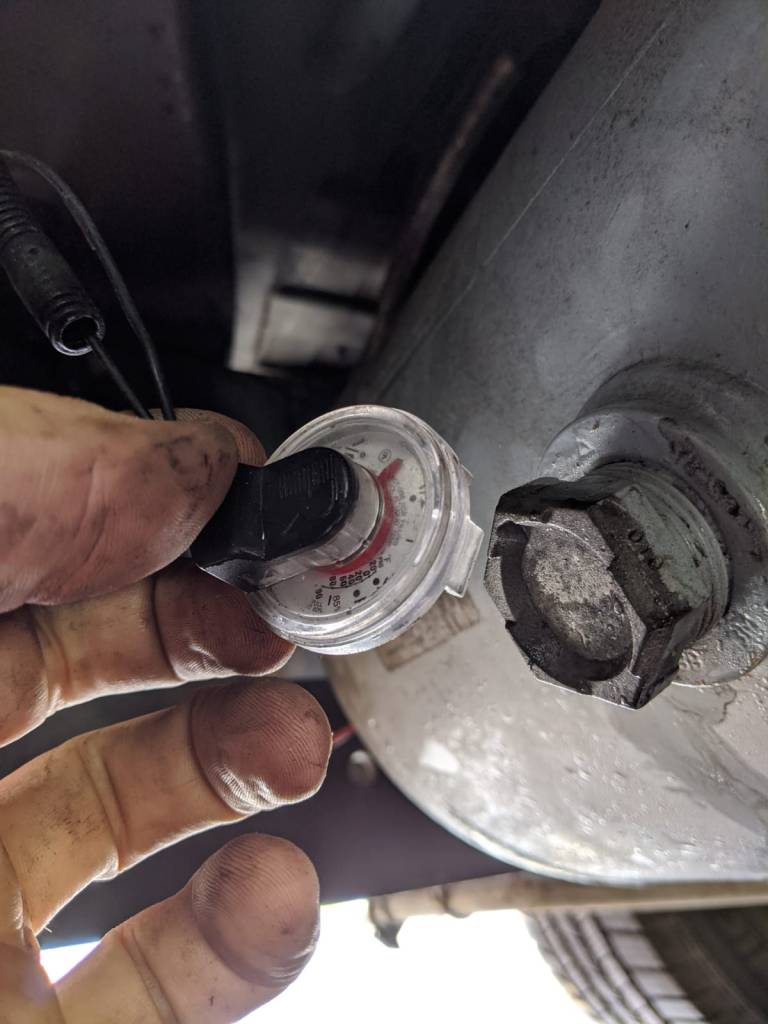
Once the tank was low enough to remove the silly velcro regulator cover, I removed four screws on a bracket and unscrewed the regulator. Put everything back in the reverse order, and then had a cold drink out of the newly functioning fridge.

